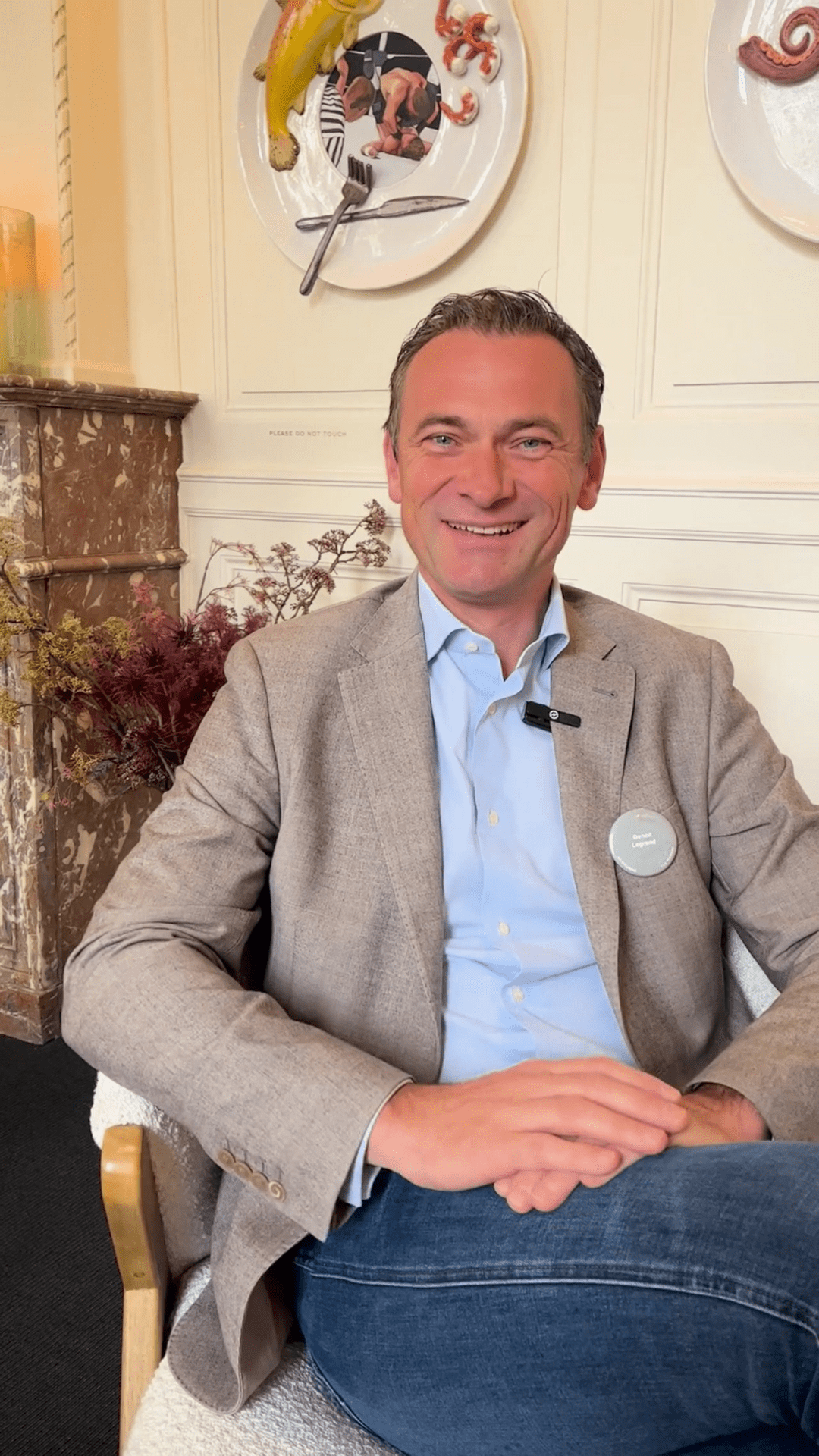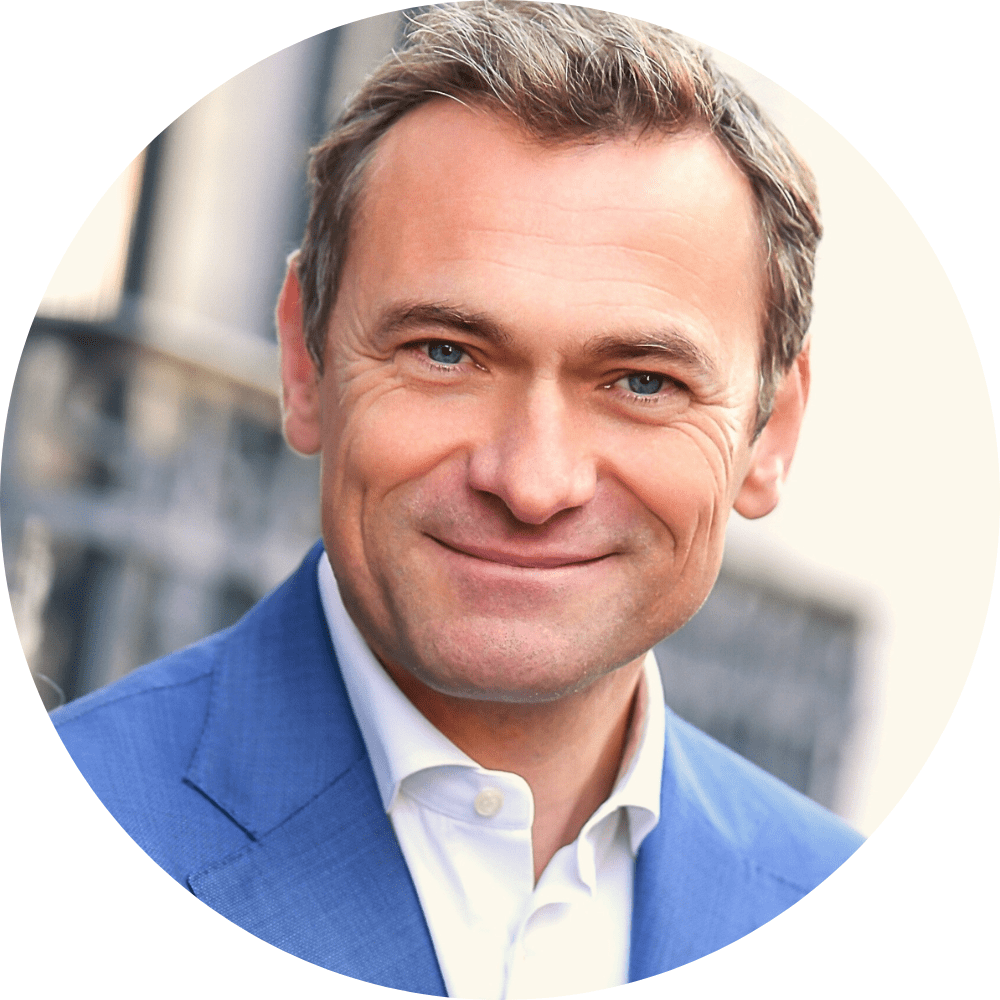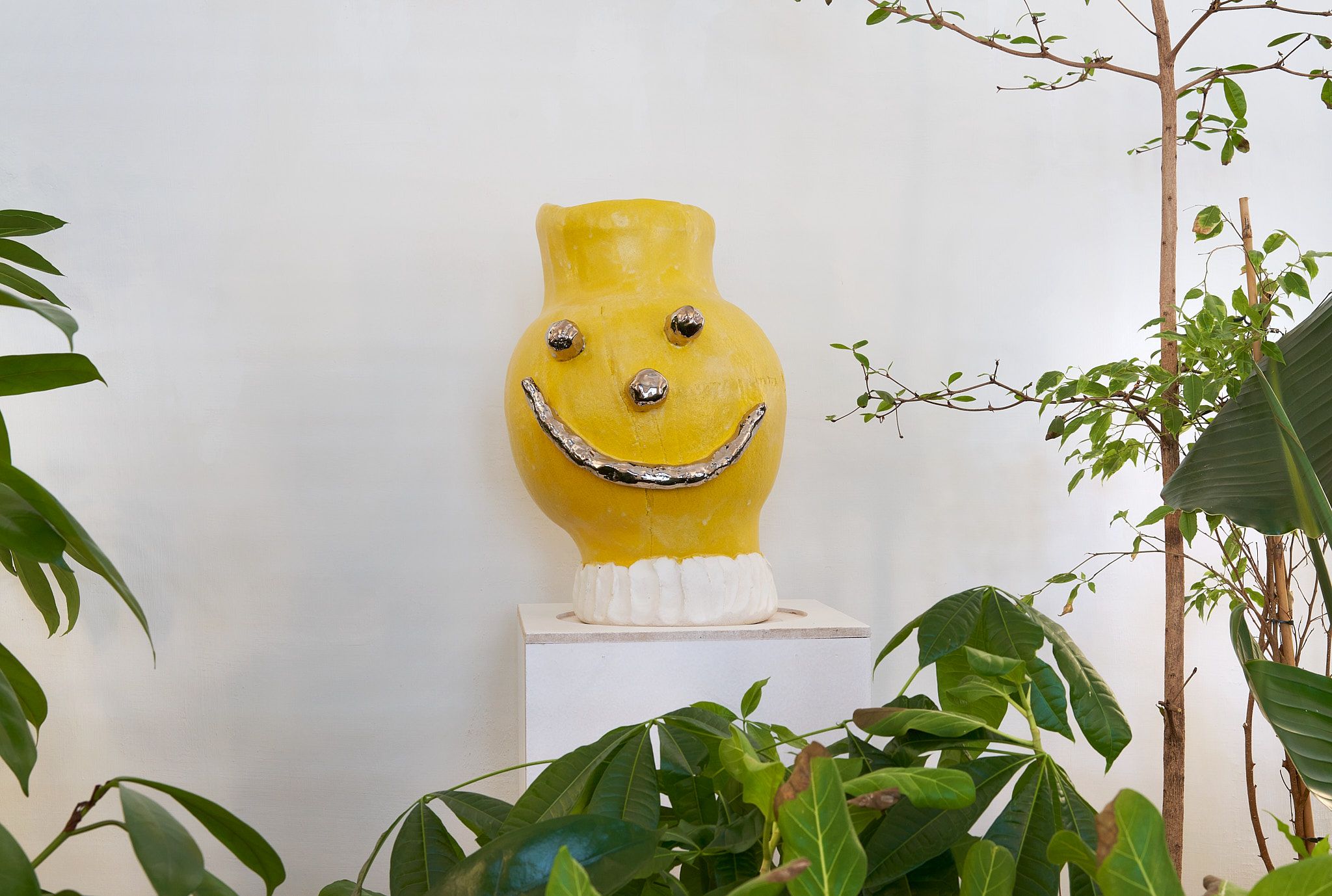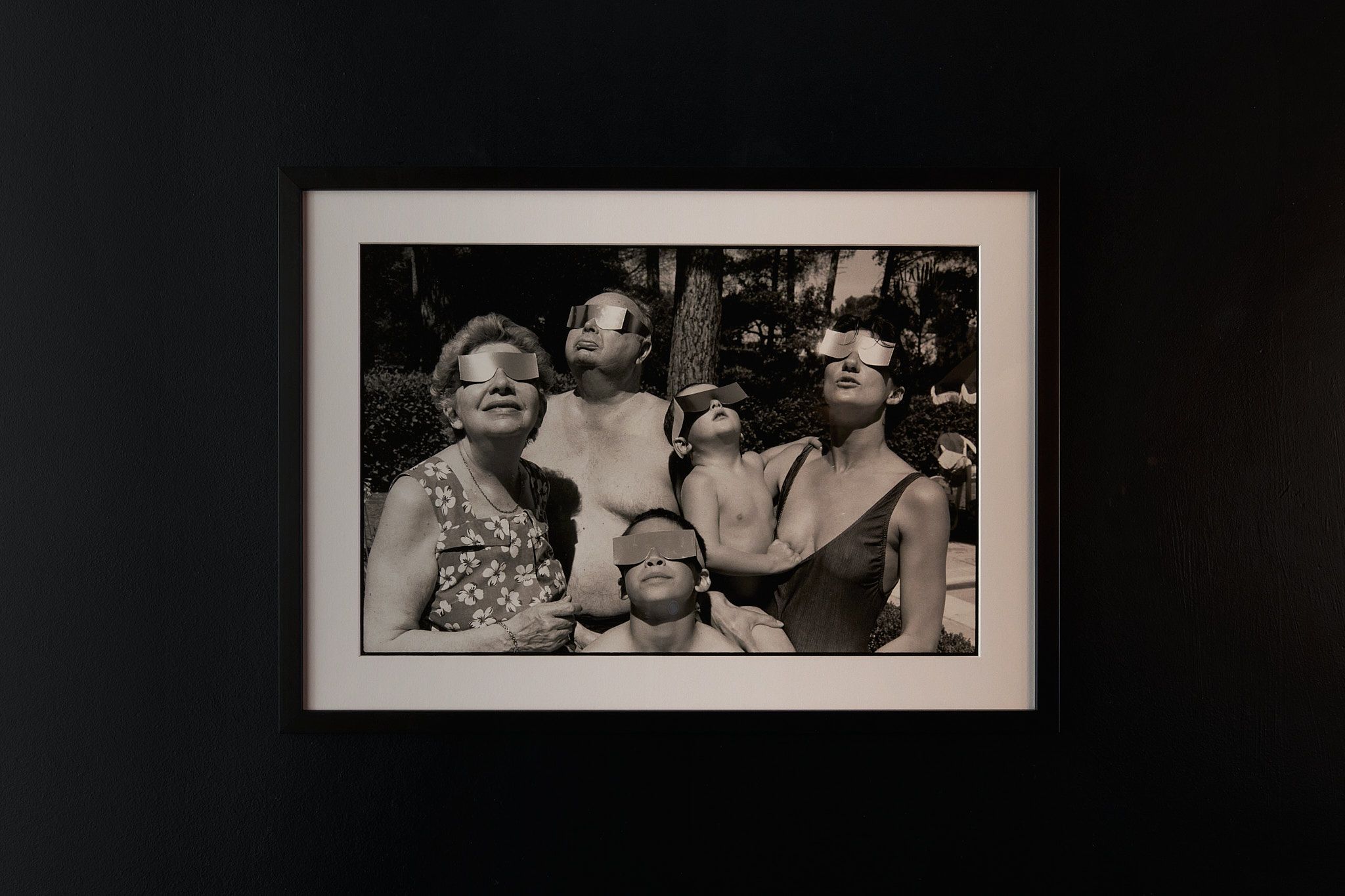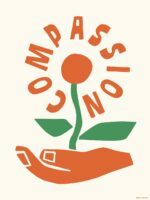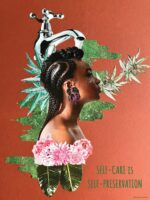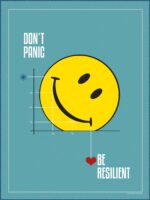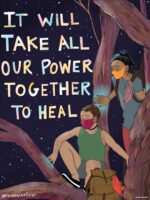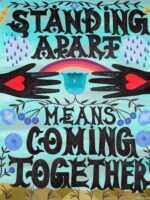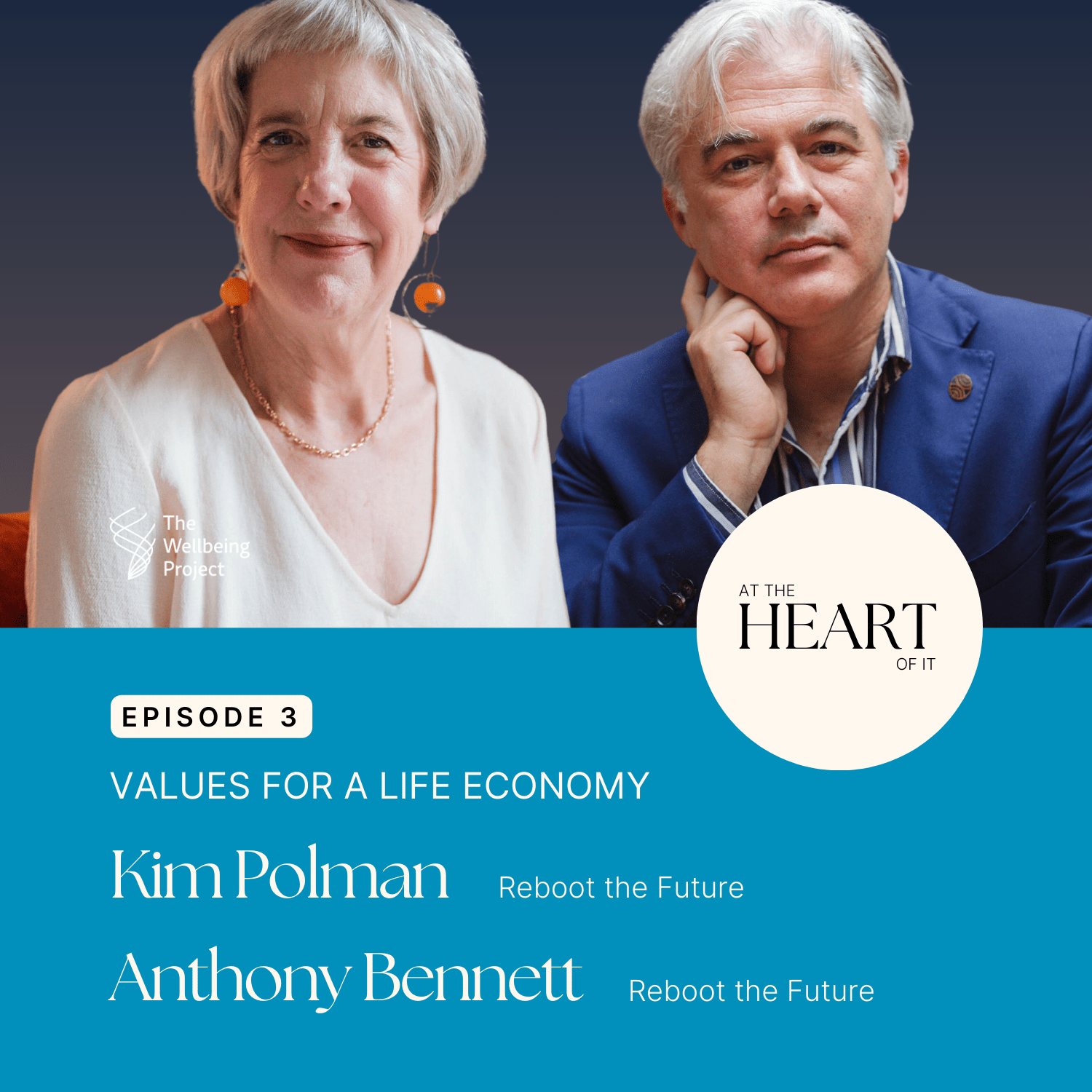
AT THE HEART OF IT – EPISODE 3
KIM POLMAN AND
ANTHONY BENNETT
Values for a Life Economy
In this thought-provoking episode featuring Kim Polman and Anthony Bennett from Reboot the Future, we explore the timeless principle of the Golden Rule to foster social change and collective wellbeing. Mixing ancient proverbs, modern science, and imaginative stories, we discuss how humans are hard-wired for connection and the lessons nature can teach us about sustainable development.
Building on what Kim shared at the first regional wellbeing summit for social change in Belgium alongside Satish Kumar, we reflect further on how respect, reciprocity, and kindness can be the foundation of our wellbeing future. What are the universal values that connect us all and can empower our social change mission? Let’s get to the heart of it.
Let's dive right in!Let's dive right in!
LISTEN TO EPISODE 3
ResourcesResources
From This Episode
Full episode transcriptFull episode transcript
This transcript has been edited for clarity
Welcome to At The Heart Of It, a podcast where we explore issues at the heart of our world’s biggest challenges and their solutions. We’re on a journey inward going into ourselves, reflecting on who we are, listening to humanity’s collective story. Our guides are the visionary leaders, activists, scholars, and practitioners who are changing the world and whose own inner journeys of wellbeing inspire their welldoing.
Have you heard of the Golden Rule? There are a couple different ways you can say it, but maybe you’ve heard it like this. Treat others the way you want to be treated. Today’s guests are taking this simple idea of reciprocity, respect, and kindness and using it as a lens for social change.
Reboot the Future, where Kim Polman is co-founder and chair, and Anthony Bennett is CEO, is envisioning a world where we treat others and the planet the way we want to be treated. Guided by the ancient essence of the Golden Rule, their educational and advocacy work invites us to reflect inwards on our values so that we can envision the outer world we wish to create.
Whether in speaking to business leaders, school teachers, youth activists, or artists, the universal message of the Golden Rule resonates with everyone. We sat down with Kim and Anthony to hear about how the complex nature of social change can really be boiled down to this simple phrase: treat others the way you want to be treated. Let’s get to the heart of it.
Madelaine VanDerHeyden (MV): All right, here we go, welcome back to At The Heart Of It, the new podcast from The Wellbeing Project. I have the distinct pleasure today to be joined by our friends from Reboot the Future, Kim Polman and Anthony Bennett, who are here to speak with me about all things related to values for life economy, The Golden Rule and collective wellbeing. Kim and Anthony, it’s great to have you here. Why don’t you introduce yourself and tell our listeners about your work?
Kim Polman (KP): Hello, I’m Kim Polman and I co-authored a book called Imagine Yourselves, Visions of Transformation at the end of 2016, and that led to the formation of our charity, Reboot the Future.
Anthony Bennett (AB): Hello, Madelaine. Nice to be with you. I’m Anthony Bennett. I’m the chief executive of Reboot the Future, which was my real honor and privilege to do so. And yeah, I joined Reboot the Future just four years ago and I joined Reboot the Future on the first day of the pandemic. So it was the first day in lockdown, and it was also my birthday, and also I had COVID.
MV: That’s definitely a triple whammy there. But what a nice birthday gift to be entering into a new job, a new organization, of course you met Kim.
AB: So, when I first came for an interview with Kim, Reboot the Future sounded like a really good name for an organization, but I think in COVID it definitely became a really good name for an organization.
MV: Well, Kim we met you at The Wellbeing Summit in Brussels last November. And you shared a little bit about your work with Reboot the Future, but really spoke to us about the fundamental concept that Reboot the Future is based on, which is the Golden Rule. So first, why don’t you both tell us a little bit about the mission of Reboot the Future and what do you do, and what needs in society at large are you looking at with your organization?
KP: Well, I started to think about the Golden Rule seriously, it was probably 2014 or so as a guiding principle that everyone should really be aware of. 2015 was an important year for the world because that was the year the Sustainable Development Goals were agreed upon by the UN and it was also the Paris Climate Agreement, which had finally reached some sort of serious level of international agreement. And it was also the year that the Pope published his encyclical on climate change. And, even though I’m not Catholic, I did read this encyclical. It was very interesting document in which he asks every citizen of the world to think more about the planet, about other life on the planet, and not just human life. And because we live in such a hugely complex world, I’m probably a simpleton, but I thought, you know, the world needs some simple idea as a motivational principle. The SDGs are very technical. But what’s the motivation behind them? And so this Golden Rule is quite universal. It’s in all religions, at the root of all religions. A Christian version of it is “do unto others as you would have them do unto you”. The Jewish have another version which is “don’t do to others what is hateful to you”. And so, recognizing that this is thousands of years old and then listening to what the Pope asks of the world’s citizens, we added the planet to it. So it’s “treat others and the planet as you would wish to be treated”. So the need that we’re addressing is, increasing polarization and division in the world, serious mental health issues, and kind of a lack of values, an awareness of what our common values are as humanity. So, this simple principle really summarizes the basic values that tie us all together. That was really what I started to want to do: to spread that simple principle, try to reduce the complexity of the world to something that people can grab onto easily and remember easily, no matter what age, no matter what anybody is doing in their lives. But it’s a kind of a daily guide for making the decisions that we make every day and how we live our lives.
MV: Thank you so much, Kim, for that background, that story. Anthony, is there anything else that you wanted to add to that?
AB: Yeah, so just to pick up on what Kim was saying there. So we live in a very information-dense world. And it seems that even though through our devices and the internet and our technologies, we have more access to data, to culture, to content, to all kinds of information. And yet trying to pick a route through that is really, really difficult. And it’s a really dense thicket that people have to traverse morally and ethically and sustainably. So, from when I first met Kim, when I came to Reboot, it seemed to me like a really elegant precept, a really simple tool, which can lend itself to all kinds of complexity if you so choose. But the key aspect of it is that it is embedded in every culture. So it’s not about you know kind of western ideology that’s being imposed. You can find it in Confucianism, you can find it in Ubuntu, you can find it in multiple secular traditions as well. So the beauty of it when I came upon is it wasn’t that there was something new discovered here. It’s actually super old, super timeless. And you can see that some version of this idea of reciprocity has been embedded in every place ever that has had a civilized society. And so you can say that the Golden Rule is the original operating system of civilization. And what do you do when your operating system crashes? You reboot it. So this is the simple point of, re-engagement that every society can default to this this kind of factory setting. So as soon as I heard it, I recognized it. And the beauty of doing this work is we hear, you know, multiple people, multiple institutions and organizations who are coming at this from their own trajectory, but aligning upon the same realization, this idea of reciprocity. And then by extending it to the earth, I think we’re doing something really important as well. There are 17 SDGs. As Kim said, they’re very technical. And I think to give people that kind of simplicity of tool that they already recognize in an effort to pick their path through what is a very polarized world, is fundamental. In the United States and in the UK, irrespective of one’s political sympathies, you can recognize that we are deeply polarized just now as a society, and that large swathes of our communities have simply lost the ability to talk to one another. So this idea of putting other communities, other people first, but also putting the earth and its resources as part of that dialogue is, I think, just a deeply useful tool to take forward.
MV: What I find so interesting, and thank you both for those two explanations, but one of the things that feels really profound to me as you explain one, the universal human values that are held within the Golden Rule, whether you say it in one phrase or a different phrase, or whether it’s repeated in one side of the world or the other, it’s something that’s universally human. And you’re explaining that the sort of inspiration for coming back to the Golden Rule and having this be the guiding light now is in response to the polycrisis we’re facing today. In the 21st century in the technological digital era, do you see any sense of irony that, you know, the key that you’re looking at using to unlock a new future is actually something so old and so ancient that predates all of this? What are your thoughts on that?
KP: Well, I think because of this technology and how materially focused our society is, the consumer society has a promise of happiness, but it’s actually not bringing us happiness and contentment. It only brings divisions. We’ve lost that connection with what is really the most important thing. And fortunately there’s this awakening going on right now. Many of us, we’ve been meeting a lot of these other people who were trying to get people to get back to the basics of what is really important to life. And it’s as simple as love really. And that’s what we all need and want. Obviously we need to have enough to eat and shelter on our heads, but beyond that basic level of needs that are met, we get lost in all this technology and everything. And so what we’re really trying to do is get people to get back. So we have a story called the map about the imaginal cells, and it’s a metaphor with what’s going on today that gives it perspective. And so the caterpillar represents an old way of doing things. Which is the economy as we have developed it very exploitative, very competitive, very focused on me, my, what I want and I’m told what I want as well. So that caterpillar eats and eats and eats. And then he goes into his cocoon and starts breaking down. But inside the caterpillar, dormant are these imaginal cells that hold the identity of the butterfly. So, when the caterpillar is decaying, that ignites this imaginal cell, which is innate, as I said, but the caterpillar doesn’t like it, the old way doesn’t like this new way, and so starts to attack this new way, these imaginal cells. But the imaginal cells, they emit a common frequency and they cluster and find each other and then the caterpillar disappears and out comes the butterfly. So it is this idea of this butterfly is innate, just as the Golden Rule caring for others is innate in all of us. And we just have to tap into that core part of humanity. In fact, it’s a quality of all mammals because we give birth to babies that are helpless. They don’t survive more than a few days without their mothers nourishing them, nurturing them. So it’s that caring part is so fundamental to who we are. And what we’re trying to do is really activate that.
AB: I’ll give you some examples of how this manifests itself in real time. There’s a professor of neuropsychology at Rockefeller University in New York called Donald Pfaff, and he wrote a book about the Golden Rule in neuropsychology. And he was on the New York subway one day, and he saw somebody fall onto the tracks. And, you can imagine the scene and he and most other folks there just froze. In the sense of what would you do in that situation? And then in the split second where he froze, somebody else jumped onto the tracks and recovered this individual and dragged them back onto the platform. And at that moment, Pfaff realized that we are hardwired for cooperation. We’re hardwired to look out for each other. There was no rational reason why that individual would completely disregard their own self-preservation, put themselves in harm’s way in order to look out for somebody that they didn’t know. There’s something very important that is inherent to our survival as a species where we look out for each other, but we can forget that. Again, especially in this period of history, it seems like we are atomized and completely thinking about our own, selfish individual needs and desires. But actually the basis of our survival is about cooperation and about looking out for each other. You can take a very simple act in order to look out for the wellbeing of others. And in the big macro level I would extend that to the idea of the just transition. The idea that the Global North and the Global South are in this together and that there is every danger that we try and move to, a new paradigmatic shift for a sustainable planet in which people in the Global South, as ever, are expected to do most of the labor. And they’re also meant to not dig or tunnel or extract the carbon and fossil fuels under their own territories and to sacrifice that. So in order to move to a genuinely sustainable planet, we have to rebalance and recalibrate the relationship between the wealthy North and the poorer nations of the South, and rethink what that relationship looks like. And I think that’s a genuine example of treating others on the planet as you wish to be treated. A lot of the presumptions about where we go next on this thing are about people in the Global South making all the sacrifices in order to preserve the standards of living that we acknowledge and accept here in the West. So I think, again, it’s about trying to envisage the needs and the wishes and the lives of the people in every part of the planet as being equal and that we are co-pilots and partners in this thing. So for me, the Golden Rule is something that you can bring in on a very personal, intimate level to your own kind of, you know, family life, your own kind of personal relationships, but it’s also something that affects on the bigger level, big macroeconomic institutions too.
MV: Well, thank you both. And Anthony, at the end of your last response, you were hitting the magic word of wellbeing that we love here at The Wellbeing Project. But both of you were leading into part of the conversation I’d really like to have, which is how the Golden Rule is deeply interconnected between concepts of individual and collective and planetary wellbeing. And as you’re talking about, how, for example, the caterpillars transition into the butterfly or the baby that’s being cared for by its mother or the future of humanity and cooperation between the global North and the global South in a just manner, it’s all about relationships, and the dynamic in between the relationships, whether that’s on an interpersonal level, or on a more systemic macroeconomic or political level. And just for the benefit of our listeners here, I wanted to read two things from your book, Values of a Life Economy. Of course, you both know these two things that I’ll share, but I wanted to make sure that our audience have them as well.
One you’ve written that, “The Golden Rule leads us to recognize the sacredness and fragility of the world and to treat the earth and its species with compassion. Ultimately, it leads us to promote a life economy. A system that works towards the wellbeing of all life on our planet.”
And then you’ve listed ten values that you explore in the book that I guess you could say, maybe are the foundation or help create the space in which this life economy can thrive. And I’ll just read them very briefly, but it’s to love each other; to have compassion and empathy; to love the earth and be good stewards; to find balance; to listen and empower the youth; to promote education and good citizenship; to act as a good ancestor; to build a life-centered economy; and to work in partnership. So looking at all of these values and looking at what you see as the deep meaning behind the Golden Rule, and that’s on a more emotional level, maybe more spiritual or philosophical level, but then also on a more practical level: how do you see the Golden Rule guiding us when it comes to wellbeing for social change, where do you think it’s taking us?
AB: So I would point to one of those values. There is balance. And as I was thinking about this word, wellbeing, what does it mean to be well, and there’s obviously different applications of that word, but the ones where it seems to be most readily applied is the idea of wellness as sufficiency. So if I say to you, I’m doing well, it means I’m doing well enough. And similarly, if I say to you that somebody is known well, it means that they are known to a kind of sufficient level, and I think this idea of sufficiency is key, that we’re acting within an appropriate level of boundaries. It makes me think of Kate Raworth’s Donut Economics. And wellness is something about having a balanced appetite for life and balancing of one’s own personal appetites and desires versus those of sufficiency. The obvious, direct example of that would be not consuming resources, either food or energy or anything else to a point where it becomes destructive for yours or oneself. So I think for me, that’s the key concept where there’s an optimal point that we can hit in terms of what’s best for our own spiritual and psychological growth and nutritional growth and biological growth and everything else and what’s optimal for everybody else in the rest of the planet.
KP: Yeah, so for me, the Golden Rule takes us to something even simpler, which is every day whatever we’re doing, are we being helpful or are we being hurtful? Just a very practical example, let’s just talk about vaping: vaping is the exact opposite of anything we should be doing for the life economy. It was not designed with any environmental understanding the effects that it has on the earth and the production of it with lithium batteries, and then the disposability of it, and then the colors and marketing of it to young people. It was built as being safer than cigarettes, healthier than cigarettes, but it’s actually not, it’s more toxic because of all the chemicals in it. So it’s completely opposite of wellbeing on all aspects of this particular product. So, we have to ask ourselves in any one of those capacitors, the investor, the designer, the factory, all of these, what is it that I’m working on every day that is helpful? And what is harmful? We must be honest about this question. And it requires a completely different set of questions that businesses should be asking themselves. For example, not only businesses, but businesses are responsible for producing everything that we use in this world and consume, so they are very, very responsible. But it’s also how we behave in our daily life, how we relate to each other. So, that for me is really the key question. Are we being helpful or harmful?
AB; Yeah, I’d add to that. I mean, I think that the vaping thing is really interesting because if you think of tobacco in its natural organic form, tobacco was used as a sacrament by Indigenous peoples in North America. And it was used on a very occasional basis for rituals and traditions and ceremonies. And it was used as a meditative process with other members of the community. So compare that against how the big tobacco industries have ruthlessly extracted harvest and accelerated the addictive qualities of that substance. You could point to a similar history of, cocoa and chocolate, right? Which was again, originally, a kind of religious sacrament to be used sparingly and at certain times with certain purposes amongst the people who cultivated it. Which has now become, you know, an ubiquitous product which is harvested at a completely ecologically dangerous level and you know, modified with vegetable oils and sugars in such a way as to turn it into actually quite a destructive consumer product as well. So the substances themselves aren’t inherently iniquitous. It’s about how people deploy them, harvest them, cultivate them and market them.
MV: Well, I think the path that you’re going down to talk about the environment is really interesting and I want to come back to that, but maybe just one final question on the interplay between the individual and the collective. Of course, you know, the Golden Rule is beautiful and it’s aspirational. And for example, Anthony, in your example, you gave up the person who fell on the subway track in New York is an example of how humans are hardwired to be in community and be connected. But I’m sure we can all look at our own lives and think of shifts and changes we want to make in our own lives that we know might be for the benefit of others, but might cause us to be a little bit out of our comfort zone, or we might have to spend a bit more money, or we might have to humble ourselves a little bit. What’s the dynamic there between the individual and collective then when we maybe come to a wall and think, my life would really have to change if I wanted to do something or if I wanted to act in a way that’s really, really helpful and not harmful?
AB: Well, first of all, I don’t want to be pejorative about New York. But I’m reminded of, a movie called “Crocodile Dundee”. And at one point somebody comes to New York and asks how many people live in New York. And he gets an answer, 8 million people. And the guy says, well, 8 million people in New York must be the friendliest city in the world. And of course, that’s the joke, right? Because nobody thinks of New York as being so nice, but when you think about it, for any number of people to live together in a community like New York or London or anywhere else, there have to be a billion acts of kindness embedded into the system every day. That actually these are places of real flourishing of kindness, which is so commonplace actually becomes banal and invisible. And I think that’s, a useful way to think about, how many of those acts of kindness have just become so commonplace that we embed in it in our operating system just to get by. So I continuously remind myself with gratitude about that, that the big visible acts of cruelty are so egregious. And seems so exceptional because they are exceptional.
KP: Actually, I agree with you. It is the exception to be violent it just gets a lot of attention and it can be so destructive. I’m always trying to find the answer to why, it is so hard to build something up and so easy to destroy it. But because it is so easy to destroy it, it’s just a cautionary note that we need to be even more careful and do ask this question more often, am I being helpful or hurtful? And I’ve gotten very interested in farming lately and the health of the individual is just really important for a collective health. And so this little analogy is I’ve learned a lot about soil lately. Dirt, in fact, dirt has a bad connotation, you know, like washing ourselves and cleaning our clothes and we don’t like dirt. But in fact, it’s soil that is growing our food. And you need to have really healthy soil and the healthier the soil, it is, the more undisturbed it is the more it holds moisture and all kinds of things. So you plant your seeds in this healthy soil and you get a healthy plant. And that plant is then durable, sustainable, and it can withstand the heat and the challenges that come to it. So a pest can come in there. They can withstand it. Trees even have this power to produce a chemical that will ward off the pests that would attack it. And then, it produces, of course, a much more nutritious fruit or vegetable. And that then is given to the animals to eat, given to us humans to eat, and so the healthier the food is, the healthier we are, not just individually, but we all become healthier. It’s collective health. That’s what I mean. All connected. That’s what we really need to understand. And this is the inspiration of nature. At Reboot, we talk a lot about nature and our connection to nature and how we can be inspired by nature.
AB: I can add to what Kim’s saying here so there’s a guy called John Higgs who talks about how in the 20th century, you had two dominant models of ideology, right? And one was the West and the individual. And the other one was communist Russia and the idea of the state. So you had the individual versus the state. And you either were the triumphant hero of your own story or you were part of the collective. And those were the two binary opposites between which we have bounced for much of the 20th century. And then in 1989, Soviet Russia fell and it seemed like it was the triumph of the individual that that ideology was now triumphant. And I think we’ve seen over the last 20, 30 years that simply putting the kind of selfish concern of the individual foremost isn’t sufficient. It’s kind of leading us off the edge of a cliff. And what Higgs proposes is that there’s another model, which is one of the network, and actually, you realize that your power what makes you powerful, is your ability to flex those networks. And to Kim’s point about the ecology and the mycelium networks, the idea is that if you look at where these underground embedded symbiotic networks exist, it seems to me a much more healthy and also agile way to think about our relationships as individuals and our families and our communities and our working lives. so it needs more work. It’s not quite as reassuring as knowing that you’re either, you know, Superman or part of the collective. But I think there is something in there, that these networks start to emerge and you can recognize people across them and start to build a different kind of structure that brings forward a wholly more sustainable and attractive paradigm.
KP: Yeah, I think, I think just to emphasize that point, Anthony, that you are never alone. Even if you’re just one person living on an island, you know, all by yourself as a human being, you are connected with that environment because you need to eat and sleep somewhere safe. But you think of also the drops of water that make up an ocean, every drop is important. Because if you didn’t have all those drops, you wouldn’t have an ocean. So parts of that imaginal story is that the cells, when they’re innate, they are dormant in the caterpillar. They have different identities. So one’s the wing, one’s the color, one’s the eye, you know, that kind of thing. And they form the whole. So we may be just one, but we’re one important one next to the next important one and the next important one. And we’re all part of this system.
MV: Well, it’s amazing to me that I think every single metaphor you’ve shared so far during this conversation has been a metaphor connecting human relationships with existing relationships in nature, whether that be between organisms or just the life cycle of a plant, for example, that to me is also proof that we are all connected. That mirroring of behavior is one in the same. And we’re exploring at The Wellbeing Project, we’re exploring this concept of reconnecting and remembering how the earth does not belong to us, but we belong to the earth: Ecological Belonging. And in a very similar way that you are looking at the Golden Rule as unlocking something new and innovative in the future, we also see sense, how going back to square one, reconnecting with this intuitive organic relationship we have had with the earth is then one of the major levers in solving or getting out of this poly crisis that involves such environmental and ecological destruction. And what you say about the network approach, I think is really interesting as well. That sense of adaptability gives you flexibility and creativity and innovation for how we might be going about doing that. We’ve seen as you touched on both of you touched on that. There’s been a pattern of behavior, of binary set of way of thinking in the past that’s led us to where we are today. So having that openness to try new things and to act in a different way, look at the world in a different way is really, really important now. So I wanted to ask you what are you working on now that aligns with this idea of going back to the beginning, going back to square one, reconnecting with that relationship with nature that we, for the most part as a society have lost.
AB: Well, we center on education, culture, and leadership, and we embed our values in the Golden Rule across all these three different programs essentially recognizing that as we say, the SDGs, they work with the hemisphere of the brain, which is rational and technocratic, and we want to look at the ways in which we communicate the golden rule and the SDGs through the empathetic way. And the intuitive and to some extent or not, though the word always comes back is spiritual. So we have a network of 18,500 teachers and educators, the majority of whom are here in the UK, and we publish a platform called Global Dimension in which we provide free to air resources for all those teachers around how do you smuggle sustainability and values practice within to whatever your discipline is, and we ran a survey of members of that teaching community, asking them what kind of teaching practice do they need? How do you want to prepare your students for a sustainable economy? What kind of lesson plans, what kind of jobs do you want to direct young people to? What was clearly evident was that teachers really want to talk about values. They want to prepare young people for a sustainable vision of the planet, but they don’t feel that they’re resourced. So we published that report, we took it to COP in Dubai. We took it to Anthropy and other events as well. And for this year, we want to work with that teaching community to see, how can we drive that reform within the national curriculum? We are embedded here in the UK, but we also work with partners around the world who are doing similar work in their own curricula, because, of course, you can’t talk about this stuff in isolation, and we have partners now in India, Saudi Arabia, in Paris, we’re not the only people working in this space. Looking at what are the motivations for current classroom practice, but also what will we need in 5, 10, 15 years. My own conviction, not necessarily Kim’s or Reboot’s, but my own feeling is that it’s going to be really tough for us to stay within 1.5 and we probably need to start to prepare for that. And if we’re not going to stay within 1.5, the next best thing we can do is to start to prepare young people for the world that’s going to come. And I don’t want to couch language or use word that’s apocalyptic or negative or pessimistic. I think we have every technology and every resource we need to create that sustainable vision for the future. We just need to get busy with it right now. And students and schools and the teaching professions are the way that we’re going to do that. I say we have 18,000 plus teachers, that every one of those teachers is a conduit to 30 young people. So we take that point that looking after the interests and nurturing that community of teachers is absolutely central to preparing the world for a sustainable planet.
MV: Well, I just absolutely love and admire what you are focusing on with preparing the future generation. Empowering the youth to be aware and involved in what’s happening and giving them the resources as well to take action is also very important and it reminds me of Kim’s metaphor as well with the plant growing in the healthy soil the environment in which we act is really, really important. And we’re getting to the end of our conversation here with both of you. And it’s been so illuminating and I just wanted to end by asking you going beyond what I know is already at the heart of your work, which is the Golden Rule for each of you, what is your main motivation, inspiration, or message for the world. Anthony, I liked what you said about not wanting to use language that’s so negative and both of you sharing that there are billion acts of kindness happening around the world, but it’s just maybe the scary things or the really negative things that get the most attention. But coming from a place of hope, or of inspiration, what is driving both of you to do the work that you’re doing?
KP: A deep caring. And my message would be just be grateful, grateful for all the goodness that is around us and that we have in our lives. I would also say if you see something and you’re really moved by it and that’s kind of epiphany, like, wow, I really want to work on that, act on it, have the courage to act on it. We do all have a responsibility to do whatever we can in whatever way we can to improving ourselves first, and our families, our friends, our communities, and then that ripples out to the world.
MV: Another natural metaphor there with the ripple effects! Anthony, over to you.
AB: So I would 100 percent subscribe to Kim’s gratitude, we are super empowered in a way that previous generations could never have dreamed of. And we should be grateful for that. And the last thing I would say is that what will lead us to catastrophe is the idea that we are isolated and disempowered and we don’t have agency. And there’s a, there’s a Scottish environmental campaigner called Alistair McIntosh that I like to quote and he’s been active for a great many years in this space and his phrase is, “you dig where you stand,” which means you look at where you are in the universe and realize that your contribution is just as vital as anyone else’s and you have to, to use Kim’s farming metaphor once more, you have to dig on the land that you stand and make use of that with the tools that you’ve got.
MV: Incredible though. Thank you so much, both from a sense of gratitude from me, for coming onto the podcast but also just for the work that you’re doing and for the message that you’re spreading in the world and for the seeds that you’re sowing in the minds of young people and in other organizations as well, as you continue your work to help us come back to, as you said, throughout our conversation today, something that is truly universal, something that unites us beyond culture, beyond language, beyond religion beyond country or nationality, something that is truly a fundamental human value. So thank you very, very much for joining us today. Before we go, are there any last words, anything else you’d like to share with our listeners?
KP: Well, just remember, treat others and the planet as you wish to be treated!
AB: Yeah, I’ll be even more I’ll act in self interest here and just say go to www. rebootthefuture.org or globaldimension.org.uk for more information about everything that we do. And thank you so much, Madelaine.
MV: Yeah, thank you. Thank you very much.
Thank you for listening to this episode of At The Heart Of It. For more news, research, and stories about wellbeing and social change, visit wellbeing-project.org. The Wellbeing Project is the world’s leading organization advocating for the wellbeing of changemakers and for wellbeing in changemaking. We believe wellbeing inspires welldoing. Thanks for listening and see you next time.


